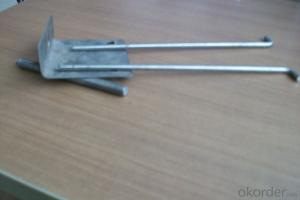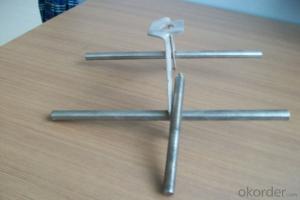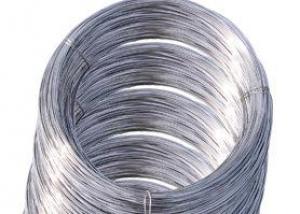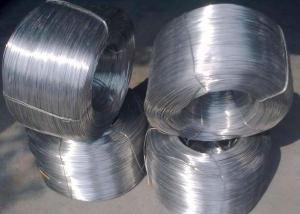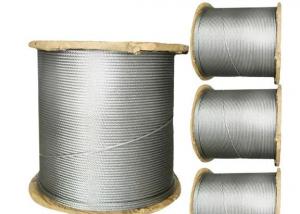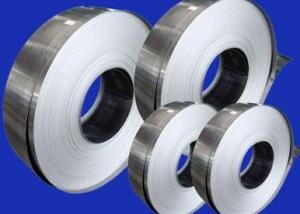Ceramic Fiber Module Refractory Anchor Product
- Loading Port:
- Qingdao
- Payment Terms:
- TT OR LC
- Min Order Qty:
- 1000 set
- Supply Capability:
- 500 set/month
OKorder Service Pledge
OKorder Financial Service
You Might Also Like
Material: SS310,SS304
Ingredient: 1Cr18Ni9Ti, Cr25Ni20
Working temperature 1260/1400 °C
For installation of ceramic fibre modules and block
U-form penetration nail
Instant card, rotation card
penetration rod
screw, nut
v-form rame
angle iron anchor
butterfly anchor
diamond anchor
hole suspending anchor, corner, anchor,etc
Wide temperature range,from800C to 1400C
Various shapes
Reasonable structure
Firm, reliable anchor
Install easily and quickly
Type | Anchor Products | |
Classification Temp.(°C) | 1260 | 1400 |
Name/Type | U-form penetration nail, Instant card, rotation card, penetration rod, screw, nut v-form rame, angle iron anchor, butterfly anchor, diamond anchor, hole suspending anchor, corner, anchor,etc | |
Textures | 304S Series | 310S Series |
Working Temp. (°C) | 1260 | 1430 |
Size | The anchor can be designed according to the application and the size of modules. | |
Packing | Carton | |
Technical Criteria | 1Cr18Ni9Ti | Cr25Ni20 |
- Q:How to make clothes hanger for 4 mm 304 stainless steel wire
- In practical application, the steel which is often corroded by weak corrosive medium is called stainless steel, and the steel which is resistant to chemical medium is called acid resisting steel. Because of the difference in the chemical composition of the two,The former is not necessarily resistant to chemical media corrosion, while the latter are generally stainless. The corrosion resistance of stainless steel depends on the alloying elements contained in the steel
- Q:Can stainless steel wire be used in corrosive environments?
- Yes, stainless steel wire can be used in corrosive environments. Stainless steel is known for its corrosion resistance due to the presence of chromium, which forms a protective layer on the surface of the steel when exposed to oxygen. This layer, also known as a passive film, prevents further corrosion and provides excellent resistance against various corrosive agents such as acids, alkalis, and saltwater. Additionally, stainless steel wire can also be further treated or coated with additional protective layers to enhance its corrosion resistance, making it an ideal choice for applications in corrosive environments such as marine, chemical, and industrial settings.
- Q:Can stainless steel wire be used for electrical conductivity?
- Stainless steel wire is indeed capable of conducting electricity. Although stainless steel is not as conductive as copper or aluminum, it still exhibits a relatively high electrical conductivity when compared to other metals. This characteristic renders stainless steel wire suitable for diverse electrical purposes, including electrical wiring, heating elements, and electrical connectors. Additionally, stainless steel wire possesses the added advantage of being resistant to corrosion, thereby making it a robust and trustworthy option for electrical conductivity in environments that may be exposed to moisture or harsh conditions. Nevertheless, it is crucial to acknowledge that the electrical conductivity of stainless steel might differ depending on its composition and specific alloy.
- Q:Is stainless steel wire suitable for wire spooling?
- Indeed, wire spooling can be accomplished using stainless steel wire. Renowned for its robustness, longevity, and ability to withstand corrosion, stainless steel wire is an exceptional option for an array of applications, wire spooling included. Its effortless winding and unwinding from a spool without the risk of kinks or breakage guarantee seamless and efficient operation. Moreover, its corrosion resistance ensures rust-free storage and prolonged utilization. Given its dependability and superior performance, stainless steel wire finds widespread use across industries like manufacturing, construction, and electronics.
- Q:Can stainless steel wire be used in food processing?
- Yes, stainless steel wire can be used in food processing. Stainless steel is a highly durable and corrosion-resistant material, making it suitable for use in various industries, including food processing. It is commonly used in applications such as food packaging, food handling equipment, conveyor systems, and food storage containers. Stainless steel wire has excellent strength and can withstand high temperatures, making it ideal for use in ovens, grills, and other cooking equipment. Additionally, stainless steel is non-reactive, meaning it does not interact with food or alter its taste, making it a safe and hygienic choice for food processing.
- Q:Can stainless steel wire be used for high-temperature applications?
- Yes, stainless steel wire can be used for high-temperature applications. Stainless steel has excellent heat resistance properties, which allow it to maintain its strength and integrity even at elevated temperatures. It can withstand high temperatures without warping, melting, or losing its mechanical properties, making it suitable for various industrial processes and applications that involve heat.
- Q:What are the different diameter options available for stainless steel wire?
- A wide variety of diameter options are offered for stainless steel wire to accommodate different applications. The range typically spans from 0.001 inches (0.0254 mm) to 0.375 inches (9.525 mm) or even larger. The availability of specific diameter options for stainless steel wire is contingent upon the grade and type of stainless steel employed. Typically, stainless steel wire is accessible in diameters ranging from 0.001 inches (0.0254 mm) to 0.625 inches (15.875 mm). However, it is important to note that certain specialty grades or custom orders may provide even smaller or larger diameter options. The choice of diameter is influenced by the intended use of the stainless steel wire. Applications that prioritize flexibility and ease of handling, such as the production of medical devices, jewelry, or fine mesh screens, often employ thinner diameter wires. Conversely, thicker diameter wires are commonly utilized in applications that necessitate high strength and durability, such as structural components, springs, or heavy-duty fencing. To determine the specific diameter options available for a particular grade or type of stainless steel wire, it is advisable to consult with a supplier or manufacturer. They can offer guidance based on the intended application and requirements, ensuring that the chosen diameter aligns with the project's needs.
- Q:Can stainless steel wire be used for cable railing systems?
- Yes, stainless steel wire can be used for cable railing systems. Stainless steel is a durable and corrosion-resistant material, making it a popular choice for cable railings. It provides strength and stability while also offering an aesthetically pleasing appearance.
- Q:What are the different packaging materials available for stainless steel wire?
- Depending on the specific needs and requirements of the product, various packaging materials are available for stainless steel wire. Some commonly used options include: 1. Spools: Stainless steel wire can be wound around cylindrical devices made of plastic or metal known as spools. These spools offer convenience and ease of use, allowing for easy unwinding of the wire when needed. 2. Coils: Another packaging option is coils, which are typically larger and more loosely wound than spools. Coils are often used for larger quantities of wire or when the wire needs to be cut to length. 3. Reels: Reels are suitable for packaging larger diameter or heavier gauge stainless steel wire. They are usually made of metal or wood and have the capacity to hold a significant amount of wire. 4. Bundles: In certain cases, stainless steel wire is packaged in bundles, where multiple wires are tied together using straps or wire ties. Bundles are commonly used for transporting or storing larger quantities of wire in a compact form. 5. Shrink-wrapped spools: An alternative packaging option is spools that are covered in a layer of plastic film, which is then heated and tightly shrinks around the spool. This shrink wrap provides additional protection to the wire during shipping and storage. 6. Labeled packaging: To ensure proper identification and traceability, stainless steel wire can be packaged with labels that contain information such as wire diameter, material grade, and lot number. This helps in maintaining quality control and easy identification of the wire. In conclusion, the choice of packaging material for stainless steel wire depends on factors such as the quantity of wire, the specific application, and the desired level of protection during transportation and storage.
- Q:Can stainless steel wire be used for filtration applications?
- Yes, stainless steel wire can be used for filtration applications. Stainless steel is a durable and corrosion-resistant material, making it suitable for various filtration processes. It is often used in industrial settings to filter liquids, gases, or particles. Stainless steel wire can be woven into different mesh sizes and shapes to achieve the desired filtration efficiency. Additionally, the wire can be coated or treated with various substances to enhance its filtration properties, such as improving resistance to high temperatures or chemical reactions. Overall, stainless steel wire is a versatile material that can effectively meet the filtration needs of different industries.
1. Manufacturer Overview |
|
|---|---|
| Location | |
| Year Established | |
| Annual Output Value | |
| Main Markets | |
| Company Certifications | |
2. Manufacturer Certificates |
|
|---|---|
| a) Certification Name | |
| Range | |
| Reference | |
| Validity Period | |
3. Manufacturer Capability |
|
|---|---|
| a)Trade Capacity | |
| Nearest Port | |
| Export Percentage | |
| No.of Employees in Trade Department | |
| Language Spoken: | |
| b)Factory Information | |
| Factory Size: | |
| No. of Production Lines | |
| Contract Manufacturing | |
| Product Price Range | |
Send your message to us
Ceramic Fiber Module Refractory Anchor Product
- Loading Port:
- Qingdao
- Payment Terms:
- TT OR LC
- Min Order Qty:
- 1000 set
- Supply Capability:
- 500 set/month
OKorder Service Pledge
OKorder Financial Service
Similar products
New products
Hot products
Hot Searches
Related keywords
